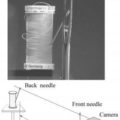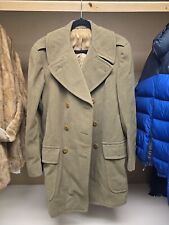
Researchers have discovered a regulatory mechanism that enables frog embryos to develop normally even after being split in half (as in the development of identical twins). The findings, appearing in the journalCell, may have implications for current research into stem cell therapies as stem cells develop in a similar fashion, attempting to differentiate into embryos with many cell types. These same self-regulatory mechanisms in stem cells may hamper efforts to use them therapeutically to regenerate damaged or diseased tissue, said the researchers.
The experiments, carried out by researchers at the Howard Hughes Medical Institute, were conceived in an attempt to learn more about the mechanisms underlying the establishment of a morphogenetic field. A morphogenetic field consists of a gradient of regulatory proteins that aid in organizing the differentiation of embryonic cells and give an organism its overall shape. Morphogenetic fields are responsible for the embryo’s remarkable resiliency, and to date, have been something of a puzzle for researchers.
To investigate this self-regulation, the researchers split Xenopus embryos into dorsal and ventral halves and then inhibited BMP signaling selectively in the halved embryos. These experiments revealed that while the ventral half of the embryo required specific BMPs, “it was rather shocking to us that the dorsal part of the embryo developed fairly normally,” said De Robertis.
After another series of experiments, it was revealed that dorsal development utilized another member of the BMP family, called anti-dorsalizing morphogenetic protein (ADMP). The researchers said that the two kinds of proteins in the two halves of the embryo were regulated in a “see-saw” fashion. For example, when the researchers decreased BMP signaling levels, ADMP levels would rise, and vice versa. Such compensatory ability is a key to self-regulation in the embryo, explained De Robertis.
In another experiment with surprising results, the researchers inhibited the activity of all the relevant regulators – BMP2, 4 and 7, and ADMP – and the entire surface of the embryo became neural tissue. “This is a major transformation of a type you almost never see in embryos, said De Robertis. “It told us that BMPs play a crucial role in the establishment of a self-regulating morphogenetic field for dorsoventral patterning.”
Some of the most fascinating results came from experiments in which the scientists grafted material from either dorsal or ventral BMP sources into the BMP-depleted embryos which restored the normal formation of the embryos.
“We think this finding is important in showing that the embryo is probably patterned by two gradients of BMP – one from the dorsal side and one from the ventral,” said De Robertis. “The key to making a perfect baby every time, these experiments tell us, lies in the ability to have a double gradient that will ensure a robust developmental system that produces the same structure time after time,” he added.
De Robertis believes the discovery of such self-regulatory systems could have important implications for efforts to use stem cells in medicine. “When you try to differentiate stem cells in vitro, you tend to get a complex mix of different cell types,” he explained. “This, we think, is because the cells are trying to self-regulate into making an embryo. And just as we found that the BMP system self-regulates in a see-saw fashion, other growth factor signaling systems in stem cells might be self-adjusting in this same way.” Stem cell researchers might find it necessary to completely knock out self-regulatory systems, as De Robertis and Reversade did with the BMP system, to induce stem cells to produce specific tissues.


















Comments are closed.